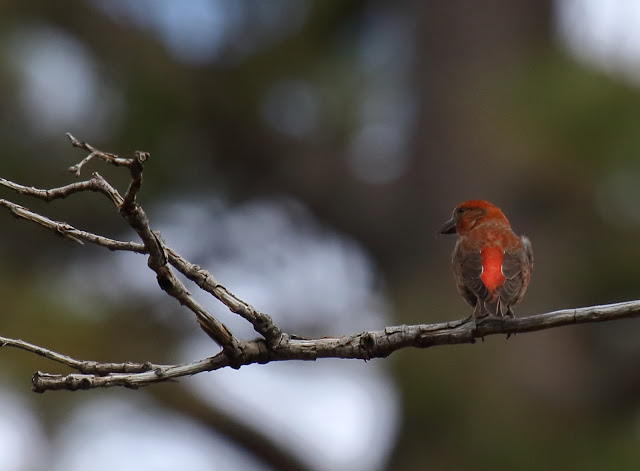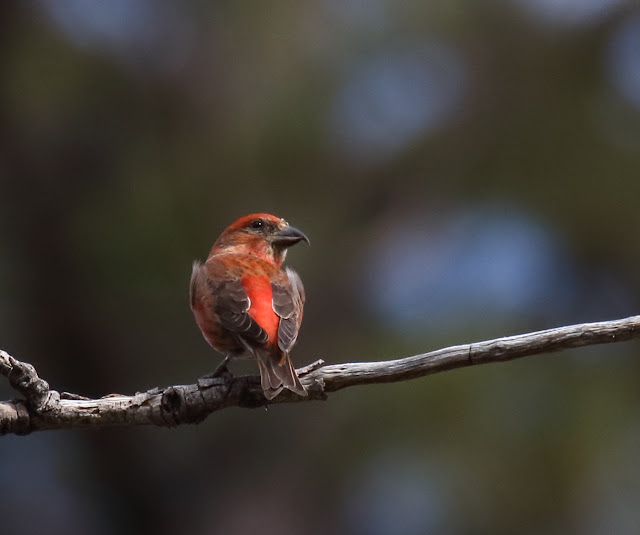Finally I heard unusual finchlike singing. It started with an 3-6 loud rising grating calls ("trreeet") along with a jumble of cheery whistled notes. Oh, there it is!
The large head and short forked tail gives the bird its distinctive plump shape. Bills vary throughout its forested range depending upon the cone size, the seeds of which is this species main food. Some have quite small and petite bills and feed on small, soft Sitka spruce cones in the coastal areas of the Pacific Northwest. Others that feed on ponderosa pines have heavy, large bills, as did this bird. The Coulter pines of this area have giant cones of 10-16 inches and are the heaviest of all pine cones.
Thus, although Red Crossbills are highly nomadic--and aren't frequent in San Diego, this bird matches physical characteristics of Red Crossbills found regularly in nearby areas, both north and south of the county.
 |
| Red Crossbill. Stonewall Mine, California. March 18, 2019. |






No comments:
Post a Comment
I really want to hear from you! I've changed settings (again) in order to try to make commenting easier without opening it up to spammers. Please note, however, that comments to posts older than 14 days will be moderated. Thank you.